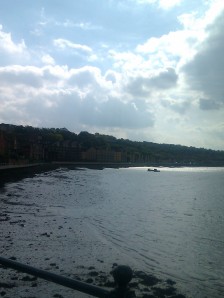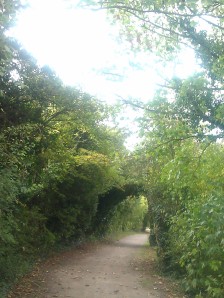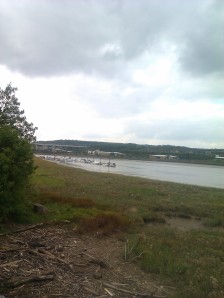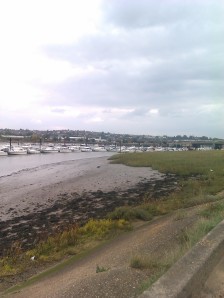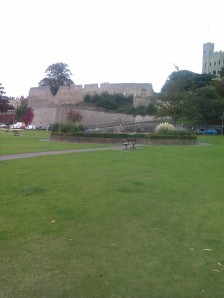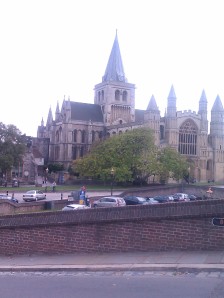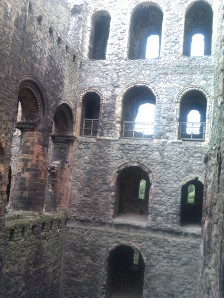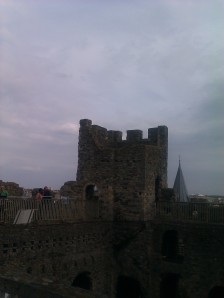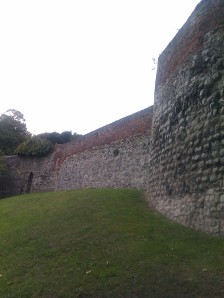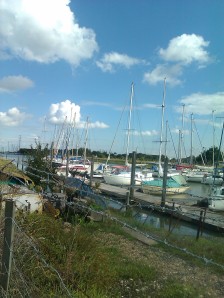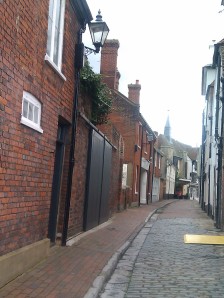I missed the bad weather which hit much of the country on 1st July. The black clouds yielded but a few drops of rain
The Viking Coastal Trail is largely traffic free and hugs the coast. I left Margate heading East in the direction of Broadstairs with views of the white cliffs 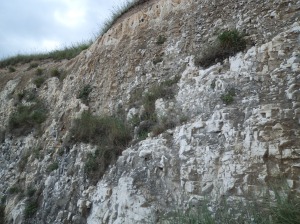

Past Walpole Bay, then Palm Bay: its golden sands deserted. Whether this was owing to the weather or the school term or simply the fact that something dire seems to have happened to Margate in the sixties, I cannot say.
A large wind farm could be seen off the coast. Which is where the residents of Sillfield in Cumbria would like to see the one in their next village.
Rounding Foreness Point, I was not surprised to see a fortification. After all, this is the coast facing our historical enemy.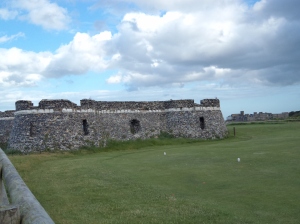

All I can find out about the above is that it is a Tower. Then round the next corner, as it were, I was much more surprised to see a fully fledged castle
It might be dark and rainy but it is still summer 
There’s a teeny stretch of (rather dangerous) road here at Kingsgate. A sign on the gate helpfully gave information about this imposing building. It tells us that Kingsgate Castle was built in 1760 by Henry Fox, the first Lord Holland. Later it became the residence of John Lubbock, the first Baron Avebury whose arms adorn the main gateway. It is now divided into private residences. I hadn’t realised that the present Lord Avebury, whose victory for the Liberal Party at Orpington in the 1960s prompted the satirical programme ‘That Was The Week That Was’ to illustrate how Liberals believed that Orpington was the centre of the world, had quite such a splendid past.
The weather on the return journey was ominous but having had dinner, I was able to enjoy the sight of the slowly darkening sky as the sun set over the sea.

This evening view was a welcome change from life in the city.




 Posted by margotwilson
Posted by margotwilson 


